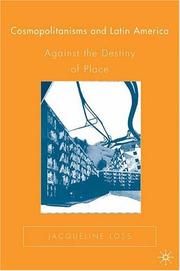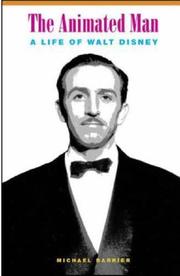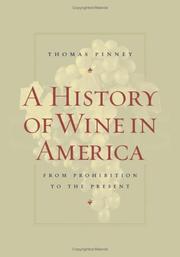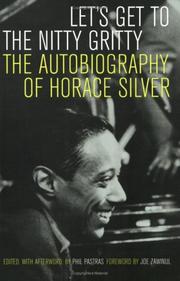| Listing 1 - 10 of 205 | << page >> |
Sort by
|
Book
ISBN: 022653734X Year: 2018 Publisher: Chicago : University of Chicago Press,
Abstract | Keywords | Export | Availability | Bookmark
 Loading...
Loading...Choose an application
- Reference Manager
- EndNote
- RefWorks (Direct export to RefWorks)
In 2001, a collection of open and affirming churches with predominantly African American membership and a Pentecostal style of worship formed a radically new coalition. The group, known now as the Fellowship of Affirming Ministries or TFAM, has at its core the idea of "radical inclusivity": the powerful assertion that everyone, no matter how seemingly flawed or corrupted, has holiness within. Whether you are LGBT, have HIV/AIDS, have been in prison, abuse drugs or alcohol, are homeless, or are otherwise compromised and marginalized, TFAM tells its people, you are one of God's creations. In Filled with the Spirit, Ellen Lewin gives us a deeply empathetic ethnography of the worship and community central to TFAM, telling the story of how the doctrine of radical inclusivity has expanded beyond those it originally sought to serve to encompass people of all races, genders, sexualities, and religious backgrounds. Lewin examines the seemingly paradoxical relationship between TFAM and traditional black churches, focusing on how congregations and individual members reclaim the worship practices of these churches and simultaneously challenge their authority. The book looks closely at how TFAM worship is legitimated and enhanced by its use of gospel music and considers the images of food and African American culture that are central to liturgical imagery, as well as how understandings of personal authenticity tie into the desire to be filled with the Holy Spirit. Throughout, Lewin takes up what has been mostly missing from our discussions of race, gender, and sexuality-close attention to spirituality and faith.
Homosexuality --- African American sexual minorities --- Pentecostalism. --- Religious aspects --- Christianity. --- Religious life. --- African American culture. --- LGBT religion. --- charisma. --- radical inclusivity.

ISBN: 9781403970343 1403970343 1349735612 1349735590 Year: 2005 Publisher: New York, N.Y. Palgrave Macmillan
Abstract | Keywords | Export | Availability | Bookmark
 Loading...
Loading...Choose an application
- Reference Manager
- EndNote
- RefWorks (Direct export to RefWorks)
This book examines Latin America's history of engagement with cosmopolitanisms as a manner of asserting a genealogy that links cultural critique in Latin America and the United States. Cosmopolitanism is crucial to any discussion of Latin America, and Latin Americanism as a discipline. Reinaldo Arenas and Diamela Eltit become nodal points to discuss a wide range of issues that include the pedagogical dimensions of the DVD commentary track, the challenges of the Internet to canonization, and links between ethical practices of Benetton and the U.S. academy. These authors, whose rejection of the comfort of regimented constituencies results in their writing being perceived as raw, vindictive, and even alienating, are ripe for critique. What they say about their relation to place with regard to their products' national and international viability is central. The book performs what it theorizes. It travels between methodologies, hence bridging the divide between cosmopolitanism and that alleged common space of Latin American identity as per the colonial experience, illustrating cosmopolitanism as a mediating operation that is crucial to any discussion of Latin America, and of Latin Americanism as a discipline.
Thematology --- Spanish-American literature --- anno 1900-1999 --- Ethnology --- Civilization --- Ethnicity. --- Latin American Culture. --- Cultural History. --- Ethnicity Studies. --- History of the Americas. --- Sociology, general. --- American Culture. --- Cultural history --- Ethnic identity --- Group identity --- Cultural fusion --- Multiculturalism --- Cultural pluralism --- History. --- America --- United States --- Study and teaching. --- Ethnology—Latin America. --- Civilization—History. --- America—History. --- Sociology. --- United States—Study and teaching. --- Social theory --- Social sciences

ISBN: 1281752606 1429478217 9786611752606 0520941667 143370837X 9780520941663 9781429478212 9781433708374 9780520241176 0520241177 9781281752604 Year: 2007 Publisher: Berkeley : University of California Press,
Abstract | Keywords | Export | Availability | Bookmark
 Loading...
Loading...Choose an application
- Reference Manager
- EndNote
- RefWorks (Direct export to RefWorks)
Walt Disney (1901-1966) was one of the most significant creative forces of the twentieth century, a man who made a lasting impact on the art of the animated film, the history of American business, and the evolution of twentieth-century American culture. He was both a creative visionary and a dynamic entrepreneur, roles whose demands he often could not reconcile. In his compelling new biography, noted animation historian Michael Barrier avoids the well-traveled paths of previous biographers, who have tended to portray a blemish-free Disney or to indulge in lurid speculation. Instead, he takes the full measure of the man in his many aspects. A consummate storyteller, Barrier describes how Disney transformed himself from Midwestern farm boy to scrambling young businessman to pioneering artist and, finally, to entrepreneur on a grand scale. Barrier describes in absorbing detail how Disney synchronized sound with animation in Steamboat Willie; created in Snow White and the Seven Dwarfs sympathetic cartoon characters whose appeal rivaled that of the best live-action performers; grasped television's true potential as an unparalleled promotional device; and-not least-parlayed a backyard railroad into the Disneyland juggernaut. Based on decades of painstaking research in the Disney studio's archives and dozens of public and private archives in the United States and Europe, The Animated Man offers freshly documented and illuminating accounts of Disney's childhood and young adulthood in rural Missouri and Kansas City. It sheds new light on such crucial episodes in Disney's life as the devastating 1941 strike at his studio, when his ambitions as artist and entrepreneur first came into serious conflict.Beginning in 1969, two and a half years after Disney's death, Barrier recorded long interviews with more than 150 people who worked alongside Disney, some as early as 1922. Now almost all deceased, only a few were ever interviewed for other books. Barrier juxtaposes Disney's own recollections against the memories of those other players to great effect. What emerges is a portrait of Walt Disney as a flawed but fascinating artist, one whose imaginative leaps allowed him to vault ahead of the competition and produce work that even today commands the attention of audiences worldwide.
Animators --- Disney, Walt, --- 20th century american animation. --- 20th century american culture. --- 20th century american history. --- american business. --- american culture. --- animated films. --- biography. --- cartoon characters. --- cartoons. --- disney animation. --- disney company. --- disney studios. --- disney. --- disneyland. --- entrepreneur. --- mickey mouse. --- midwest. --- promotional. --- rural missouri. --- snow white. --- snow with and the seven dwarfs. --- steamboat willie. --- television. --- walt disney world. --- walt disney.
Book
ISBN: 3839439868 9783839439869 1006418792 383763986X Year: 2017 Publisher: Bielefeld transcript Verlag
Abstract | Keywords | Export | Availability | Bookmark
 Loading...
Loading...Choose an application
- Reference Manager
- EndNote
- RefWorks (Direct export to RefWorks)
This book offers insight into the approaches of a new generation of Jewish-American writers. Whether they reimagine their ancestors' "shtetl life" or invent their own kind of Jewishness, they have a common curiosity in what makes them Jewish. Is it because most of them are third-generation Americans who don't worry about assimilation as their parents' generation did? If so, how does the writing of recent Jewish immigrants from the former Soviet Union fit into the picture? Unlike Irving Howe predicted in 1977, Jewish-American literature did not fade after immigration. It always finds new paths, drawing from the vast scope of Jewish life in America. »The book will be of use to anyone planning to research or teach the field of contemporary Jewish writing and who might wish to sample some of what the rich world that Jewish Americans have created over the last three decades has to offer.« David Hadar, Amerikastudien, 64/2 (2019)
American literature --- Jewish authors --- History and criticism. --- Immigration; Jewish American Literature; Jewish Immigration; Jewish American Culture; Russian Jewish American; Literature; Judaism; America; American Studies; General Literature Studies; Jewish Studies; Literary Studies --- America. --- American Studies. --- General Literature Studies. --- Jewish American Culture. --- Jewish American Literature. --- Jewish Immigration. --- Jewish Studies. --- Judaism. --- Literary Studies. --- Literature. --- Russian Jewish American.
Book
ISBN: 9783839431115 3839431115 9783837631111 3837631117 Year: 2016 Publisher: Bielefeld transcript Verlag
Abstract | Keywords | Export | Availability | Bookmark
 Loading...
Loading...Choose an application
- Reference Manager
- EndNote
- RefWorks (Direct export to RefWorks)
How did American cities change throughout the 20th and early 21st century? This timely publication integrates research from American Literary and Cultural Studies, Urban Studies and History. The essays range from negotiations of the »ethnic city« in US literature and media, to studies of recent urban phenomena and their representations: gentrification, re-appropriation and conversion of urban spaces in the USA. These interdisciplinary and intercultural perspectives on American cities provide unique points of access for studying the complex narratives of urban transformation. »Die verschiedenen Essays blicken auf und analysieren eine große Anzahl städtischer Transformationsprozesse und deren kulturelle Repräsentationen. Sie stellen sowohl thematisch als auch methodologisch einen wertvollen und äußerst lesenswerten Beitrag zur aktuellen Stadtforschung dar.« Nico Völker, KULT_online, 48 (2016)
America. --- American Culture. --- American Literature. --- City. --- Cultural Geography. --- Social Geography. --- Sociology. --- USA. --- Urban Studies. --- Stadt --- Stadtentwicklung --- Literatur --- Amerikabild --- SOCIAL SCIENCE / Sociology / Urban. --- USA-Bild --- Bild --- USA --- Amerika --- Motiv --- Belletristik --- Dichtung --- Schöne Literatur --- Sprachkunst --- Wortkunst --- Buch --- Schriftsteller --- Stadtplanung --- Schwellenanalyse --- Stadtansicht --- Ortsansicht --- Entwicklung --- Schöne Literatur --- Cities; USA; Urban Studies; American Literature; American Culture; City; America; Social Geography; Cultural Geography; Sociology
Book
ISBN: 128343010X 9786613430106 3110253771 9783110253771 9781283430104 3110253763 9783110253764 9783110253764 6613430102 Year: 2011 Publisher: Berlin ; Boston : Walter de Gruyter,
Abstract | Keywords | Export | Availability | Bookmark
 Loading...
Loading...Choose an application
- Reference Manager
- EndNote
- RefWorks (Direct export to RefWorks)
The book traces the changing relation and intense debates between law and literature in U.S. American culture, using examples from the 18th to the 20th century (including novels by Charles Brockden Brown, James Fenimore Cooper, Harper Lee, and William Gaddis). Since the early American republic, the critical representation of legal matters in literary fictions and cultural narratives about the law served an important function for the cultural imagination and legitimation of law and justice in the United States. One of the most essential questions that literary representations of the law are concerned with, the study argues, is the unstable relation between language and truth, or, more specifically, between rhetoric and evidence. In examining the truth claims of legal language and rhetoric and the evidentiary procedures and protocols which are meant to stabilize these claims, literary fictions about the law aim to provide an alternative public discourse that translates the law's abstractions into exemplary stories of individual experience. Yet while literature may thus strive to institute itself as an ethical counter narrative to the law, in order to become, in Shelley's famous phrase "the legislator of the world", it has to face the instability of its own relation to truth. The critical investigation of legal rhetoric in literary fiction thus also and inevitably entails a negotiation of the intrinsic value of literary evidence.
American literature --- Law in literature. --- Law and literature --- Law in mass media. --- Literature and law --- Literature --- Mass media --- History and criticism. --- History. --- American Culture. --- American Literature 1700-2000. --- Discourse on Truth. --- Law and Literature.
Book
ISBN: 0520965248 9780520965249 9780520291478 0520291476 Year: 2017 Publisher: Berkeley, CA : University of California Press,
Abstract | Keywords | Export | Availability | Bookmark
 Loading...
Loading...Choose an application
- Reference Manager
- EndNote
- RefWorks (Direct export to RefWorks)
Grand Canyon For Sale is a carefully researched investigation of the precarious future of America's public lands: our national parks, forests, wildlife refuges, monuments, and wildernesses. Taking the Grand Canyon as his key example, and using on-the-ground reporting as well as scientific research, Stephen Nash shows how accelerating climate change will dislocate wildlife populations and vegetation across hundreds of thousands of square miles of the national landscape. In addition, a growing political movement, well financed and occasionally violent, is fighting to break up these federal lands and return them to state, local, and private control. That scheme would foreclose the future for many wild species, which are part of our irreplaceable natural heritage, and also would devastate our national parks, forests, and other public lands. To safeguard wildlife and their habitats, it is essential to consolidate protected areas and prioritize natural systems over mining, grazing, drilling, and logging. Grand Canyon For Sale provides an excellent overview of the physical and biological challenges facing public lands. The book also exposes and shows how to combat the political activity that threatens these places in the U.S. today.
Public lands --- Environmental aspects --- Grand Canyon (Ariz.) --- Environmental conditions. --- american culture. --- backpackers. --- consumerism. --- economist. --- environmentalism. --- foreclosure. --- forests. --- hikers. --- national parks. --- natural history. --- north america. --- on the ground reporting. --- physical and biological challenges. --- preservation. --- preservationists. --- public land. --- public lands.

ISBN: 1282360485 9786612360480 0520941489 1598757792 9780520941489 1423727592 9781423727590 9781598757798 9780520241763 0520241762 9781282360488 9780520254299 9780520934580 052093458X Year: 2005 Publisher: Berkeley, CA : University of California Press,
Abstract | Keywords | Export | Availability | Bookmark
 Loading...
Loading...Choose an application
- Reference Manager
- EndNote
- RefWorks (Direct export to RefWorks)
A History of Wine in America is the definitive account of winemaking in the United States, first as it was carried out under Prohibition, and then as it developed and spread to all fifty states after the repeal of Prohibition. Engagingly written, exhaustively researched, and rich in detail, this book describes how Prohibition devastated the wine industry, the conditions of renewal after Repeal, the various New Deal measures that affected wine, and the early markets and methods. Thomas Pinney goes on to examine the effects of World War II and how the troubled postwar years led to the great wine boom of the late 1960's, the spread of winegrowing to almost every state, and its continued expansion to the present day. The history of wine in America is, in many ways, the history of America and of American enterprise in microcosm. Pinney's sweeping narrative comprises a lively cast of characters that includes politicians, bootleggers, entrepreneurs, growers, scientists, and visionaries. Pinney relates the development of winemaking in states such as New York and Ohio; its extension to Pennsylvania, Virginia, Texas, and other states; and its notable successes in California, Washington, and Oregon. He is the first to tell the complete and connected story of the rebirth of the wine industry in California, now one of the most successful winemaking regions in the world.
Wine industry --- Wine and wine making --- Alcoholic beverage industry --- Enology --- Oenology --- Vinification --- Wines --- Alcoholic beverages --- Grape products --- Fruit wines --- Viticulture --- History. --- 20th century american culture. --- 20th century american history. --- american culture. --- american wine. --- bootleggers. --- california. --- californian wine. --- entrepreneurs. --- grape growing. --- growers. --- marketing. --- new deal. --- new york. --- ohio. --- oregon. --- pennsylvania. --- politicians. --- prohibition. --- repeal of prohibition. --- scientists. --- second world war. --- texas. --- united states of america. --- virginia. --- visionaries. --- washington. --- wine in america. --- wine industry. --- wine. --- winemaking.

ISBN: 1282360442 9786612360442 052094142X 1598759299 9780520941427 1423752651 9781423752653 9780520253926 0520253922 9781598759297 9780520243743 0520243749 9781282360440 6612360445 Year: 2006 Publisher: Berkeley, Calif. : University of California Press,
Abstract | Keywords | Export | Availability | Bookmark
 Loading...
Loading...Choose an application
- Reference Manager
- EndNote
- RefWorks (Direct export to RefWorks)
Horace Silver is one of the last giants remaining from the incredible flowering and creative extension of bebop music that became known as "hard bop" in the 1950's. This freewheeling autobiography of the great composer, pianist, and bandleader takes us from his childhood in Norwalk, Connecticut, through his rise to fame as a musician in New York, to his comfortable life "after the road" in California. During that time, Silver composed an impressive repertoire of tunes that have become standards and recorded a number of classic albums. Well-seasoned with anecdotes about the music, the musicians, and the milieu in which he worked and prospered, Silver's narrative-like his music-is earthy, vernacular, and intimate. His stories resonate with lessons learned from hearing and playing alongside such legends as Art Blakey, Charlie Parker, and Lester Young. His irrepressible sense of humor combined with his distinctive spirituality make his account both entertaining and inspiring. Most importantly, Silver's unique take on the music and the people who play it opens a window onto the creative process of jazz and the social and cultural worlds in which it flourishes. Let's Get to the Nitty Gritty also describes Silver's spiritual awakening in the late 1970's. This transformation found its expression in the electronic and vocal music of the three-part work called The United States of Mind and eventually led the musician to start his own record label, Silveto. Silver details the economic forces that eventually persuaded him to put Silveto to rest and to return to the studios of major jazz recording labels like Columbia, Impulse, and Verve, where he continued expanding his catalogue of new compositions and recordings that are at least as impressive as his earlier work.
Pianists --- Jazz musicians --- Silver, Horace, --- 526 --- Monografieën componisten --- 20th century american culture. --- 20th century american music history. --- african american culture. --- african american music. --- american composer. --- american jazz pianist. --- american music history. --- art blakey. --- artists. --- autobiography. --- bandleader. --- bands. --- bebop. --- blues. --- bop music. --- charlie parker. --- entertainment. --- gospel music. --- hard bop. --- jazz music. --- jazz. --- lester young. --- music arranger. --- music. --- musicians. --- performing arts. --- record label. --- rhythm and blues. --- silverto. --- singers. --- spiritual awakening. --- spirituality. --- the united states of mind.
Book
ISBN: 1282360833 9786612360831 0520942825 9780520942820 0520254872 0520254864 9780520254862 9780520254879 9781282360839 6612360836 Year: 2008 Publisher: Berkeley, CA : University of California Press,
Abstract | Keywords | Export | Availability | Bookmark
 Loading...
Loading...Choose an application
- Reference Manager
- EndNote
- RefWorks (Direct export to RefWorks)
Identifying music as a vital site of cultural debate, Struggling to Define a Nation captures the dynamic, contested nature of musical life in the United States. In an engaging blend of music analysis and cultural critique, Charles Hiroshi Garrett examines a dazzling array of genres-including art music, jazz, popular song, ragtime, and Hawaiian music-and numerous well-known musicians, such as Charles Ives, Jelly Roll Morton, Louis Armstrong, and Irving Berlin. Garrett argues that rather than a single, unified vision, an exploration of the past century reveals a contested array of musical perspectives on the nation, each one advancing a different facet of American identity through sound.
Nationalism in music. --- Music --- Nationalism and music --- National music --- History and criticism. --- History and criticism --- 20th century american culture. --- 20th century american music. --- american culture. --- american identity. --- american music. --- american musical imagination. --- art music. --- bands. --- charles ives. --- chinatown. --- cultural debate. --- cultural studies. --- great migration. --- hawaiian music. --- irving berlin. --- jazz music. --- jelly roll morton. --- live entertainment. --- louis armstrong. --- music. --- musical orientalism. --- musical perspectives. --- musicians. --- musicology. --- popular song. --- ragtime. --- spanish tinge. --- true american music. --- united states of america.
| Listing 1 - 10 of 205 | << page >> |
Sort by
|

 Search
Search Feedback
Feedback About UniCat
About UniCat  Help
Help News
News